How Long Do Arctic Wolves Live



Arctic Wolf
Polar wolf, White wolf, Melville Island wolf
Arctic wolves (also known as the white wolf or polar wolf) are a sub-species of grey wolves. They spend their lives in the Arctic tundra, higher than the northern tree line. They are the only wolf in the world with their coloring, unique due to the environs where they alive. Due to its isolation, this wolf is not under threat by habitat destruction and hunting as its southern relatives are, and is the only wolf sub-species that is not threatened.
Photos with Arctic Wolf

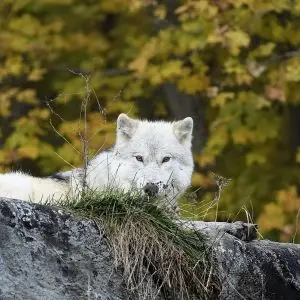
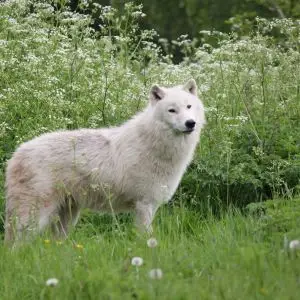
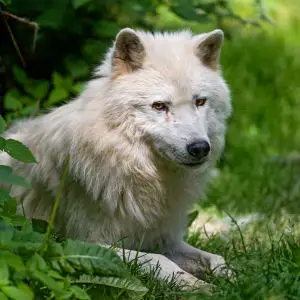
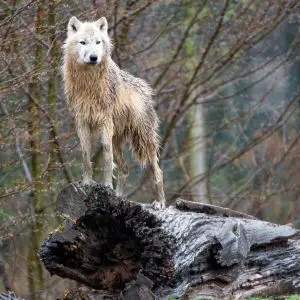
View 24 more photos of Arctic Wolf
Video
Distribution
Geography
Chill wolves are establish in the Arctic regions of Greenland and N America. They live amongst the Arctic tundra on land that is covered with ice and snow except briefly in the summer months. They also occur in the Arctic region'south glacier valleys, northern rolling hills, and ice fields past shallow lakes.

Biome
Climate zones

Habits and Lifestyle
Arctic wolves are social animals and live in packs numbering seven to eight related animals. Within the pack, there is a very complex social club, and every fellow member has its identify in the authorisation hierarchy. Each wolf knows its position through trunk posture communication. The pack's leader is a male person, and commonly only he and the dominant female mate. Even so, all pack members share the responsibility of looking later on the pups. These animals do non hide, because during the wintertime much of the species they prey on are especially active at this fourth dimension. They are awake either during the day or at night just are more often than not diurnal. Arctic wolves hunt in packs and and then share the kill. A wolf has a few different means of advice. They howl for many reasons, such as signaling their location to other pack members or bringing members together for a chase. A howl can also warn neighboring wolves to stay abroad from their territory. They use scent markings to communicate territorial boundaries, as well as their presence, to other wolves.
Diet and Nutrition
Arctic wolves are predatory carnivores and swallow a wide variety of food, hunting in packs for musk-oxen and caribou. They as well eat Arctic hares, lemmings, ptarmigan, and other minor animals, such equally nesting birds.
Mating Habits
Arctic wolves are monogamous; within the pack, simply the alpha male and beta female are immune to mate. Breeding takes place in winter from January to March. Afterward a gestation of 61-63 days, v to 7 pups are born, each weighing about a pound. The newborns are brownish in color, and are helpless, being blind and deaf, and they depend upon the whole pack to protect them. Their eyes open in about 10 days. Their mother is very protective, not allowing other pack members into the den until the pups are 2 weeks old. Pups are weaned afterward about two months. Afterward these early stages of development, the fathers assist heighten the pups past instruction them to play and hunt. Pups are strong enough at six months old to travel and will join the remainder of the pack to larn survival skills. Males go reproductively mature at one twelvemonth old and females at about the age of two.
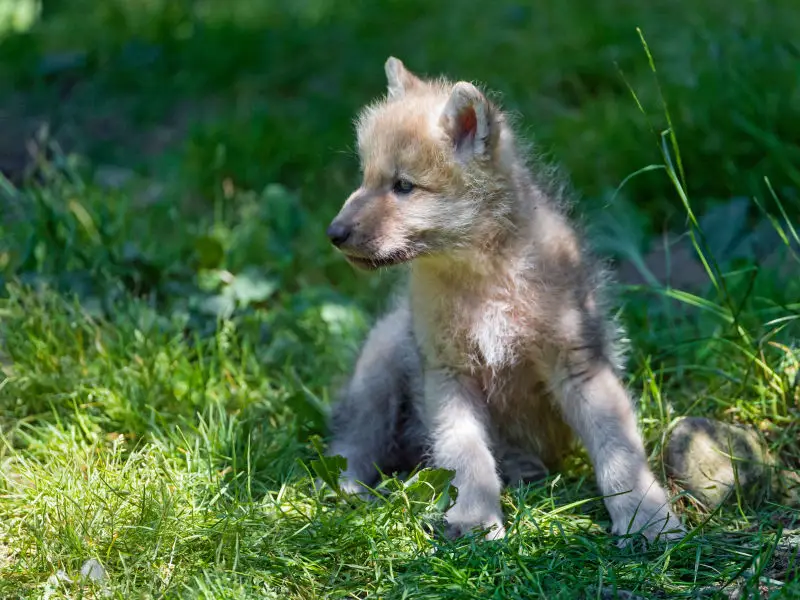
Population
Population threats
Unlike other wolf species, the Arctic wolf hardly ever comes into contact with people and is not under threat by persecution or hunting. However, industrial development is a threat, an increasing number of roads, mines, and pipelines encroaching on its territory and interrupting its nutrient supply. Another threat to this species is climate change. Recent farthermost atmospheric condition variations have made finding food more difficult for Arctic hares and musk-oxen to notice nutrient, causing their numbers to pass up significantly, and therefore affecting this traditional nutrient supply for the Arctic wolf.
Population number
According to the Absurd Antarctica resources, the total population size of the Arctic wolf is around 200,000 individuals. Currently, this species is classified equally Least Concern (LC) on the IUCN Red List.
Ecological niche
Equally carnivorous hunters, these wolves help to control the numbers of animals such every bit musk-oxen, Arctic hares, and caribou, as well as other animals inhabiting the region.
Fun Facts for Kids
- When Chill wolves hunt every bit a pack, one developed member will ever remain behind every bit a puppy sitter.
- Arctic wolves travel much farther than wolves of the forest when looking for food, and they sometimes do not eat for several days.
- The Arctic wolf can cope with sub-naught temperatures as well as 5 months of full darkness each year.
- During the winter, these wolves grow a 2nd layer of fur to protect themselves confronting the cold.
- Like many other animals, such as domestic dogs, Arctic wolves have a machinery that maintains their paws at a temperature lower than the body cadre, thus minimizing rut loss in them, although they are in contact with the frozen ground. Blood going into their paws heats blood that is leaving, preventing their core from getting cooled by the loss of estrus through their feet. The feet of ducks and penguins have similar mechanisms.
- All wolf pups are built-in with blue eyes, these later changing to a dark-brown or golden colour.
References
More Fascinating Animals to Acquire About
Source: https://animalia.bio/arctic-wolf
Posted by: stinsonhavelf.blogspot.com

0 Response to "How Long Do Arctic Wolves Live"
Post a Comment